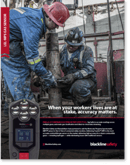Blackline Safety is a technology leader driving innovation in the industrial workforce through IoT (Internet of Things). With connected safety devices and predictive analytics, Blackline enables companies to drive towards zero safety incidents and improved operational performance. Blackline provides wearable devices, personal and area gas monitoring, cloud-connected software and data analytics to meet demanding safety challenges and enhance overall productivity for organizations with coverage in more than 100 countries. Armed with cellular and satellite connectivity, Blackline provides a lifeline to tens of thousands of people, having reported over 200 billion data-points and initiated over seven million emergency alerts. For more information, visit BlacklineSafety.com and connect with us on Facebook, Twitter, LinkedIn and Instagram.
Choosing the Right Combustible Gas Detector for Your Worksite
Blackline Safety, Leader in Connected Gas Detection & Lone Worker Safety
March 17, 2021
Since each worksite is unique and can present different safety challenges, it’s important to identify and assess risks at each of your company’s locations — then select the best gas detection technology to mitigate those risks. Here’s a step by step guide.
Considering the Gases
Companies use portable gas detectors to alert workers of the presence of combustible gases.
Combustible gases fall into one of three categories:
- Hydrocarbon gases
- Hydrogen gas
- Other combustible gases (e.g. ammonia)
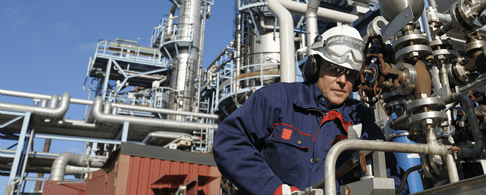 Most combustible gases that can be problematic at worksites are hydrocarbon compounds such as methane, butane, benzene and propane. These organic chemical compounds only contain the elements of carbon and of hydrogen. When one of these compounds mixes with the right amount of oxygen at a certain temperature, the heat breaks apart the hydrocarbon bonds. The result is carbon dioxide and water, with energy being released through heat.
Most combustible gases that can be problematic at worksites are hydrocarbon compounds such as methane, butane, benzene and propane. These organic chemical compounds only contain the elements of carbon and of hydrogen. When one of these compounds mixes with the right amount of oxygen at a certain temperature, the heat breaks apart the hydrocarbon bonds. The result is carbon dioxide and water, with energy being released through heat.
A similar reaction occurs with hydrogen. However, because there are no carbon atoms involved, the reaction only produces water and heat.
Other combustible gases that pose worksite threats are typically more dangerous because of their toxicity, rather than their flammability, although both of these issues can occur with these gases. Using hydrogen sulfide as an example, toxicity is reached at 100 parts per million while the gas doesn’t become combustible until it reaches 40,000 parts per million.
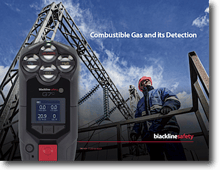
READ OUR WHITE PAPER:
Combustible Gas and its Detection
Next we’ll dive into finding the right solution for your risk factors.
Comparing Types of Combustible Gas Detectors
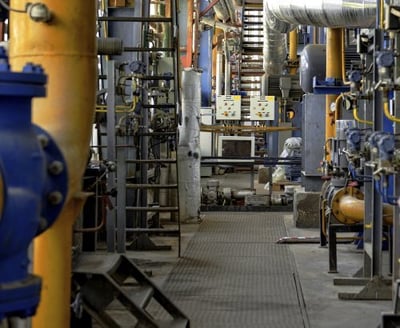 When a company includes each of the following types of detectors into their program, although it provides redundancy, it also ensures reliability. These types are:
When a company includes each of the following types of detectors into their program, although it provides redundancy, it also ensures reliability. These types are:
Fixed Gas Detection Monitors
Fixed detection monitors play a key role in locations where an ongoing risk of combustible gas presence exists, serving as a first line of defense. Permanent sensors are strategically located to provide early warnings, operating continually as they are hardwired into the facility’s electrical system. Fixed detection monitors communicate with other facility systems to automate crucial procedures involved in worker evacuations and equipment shutdowns. There are, however, some facilities that are using “temporary” area monitors as more permanent solutions due to their multi-gas capabilities and other options giving added flexibility.
Area Gas Monitors
Not all worksites are suitable for fixed detection monitors — perhaps because of the requirement for confined space entry for example. In those situations, area monitors are typically recommended. They provide the early warning benefits of fixed devices in a way that’s independent of overall site infrastructure but they can also be easily moved and redeployed to another location that requires them. Area monitors are also used in temporary situations or when there is an emergency response.
Personal Gas Detector
Personal gas monitors are portable devices that workers wear to detect the presence of gases in their breathing zone. This is the last line of defense against gas exposure and, when a combustible gas reaches a predefined level, workers will be warned to evacuate.
Modern Combustible Gas Detector Technology
The threat of explosion from flammable gases and vapors can cause severe injuries or death. If the potential for a flammable gas leak is present on your worksite, you need to understand your options for a combustible gas detection system. Today, there are three different types of sensors in use:
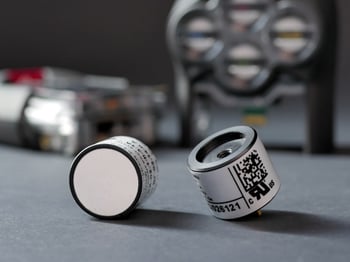 Catalytic Bead (Pellistor) Sensors
Catalytic Bead (Pellistor) Sensors
Dr. Oliver Johnson developed the catalytic combustion sensor in the 1920s at Standard Oil Company (now Chevron). This type of sensor uses beads, also called pellet-resistors or pellistors, and historically has been the most common technology used for combustible gas detection.
Non-dispersive Infrared (NDIR) Sensors
About 50 years later, Kozo Ishida filed a patent for the infrared gas detection system. Although advancements have taken place with this type of system over the past few decades, the foundational principle remains the same. Ishida developed a way to shine infrared light at a specific wavelength through a gas sample. If hydrocarbon gases are present, the returning wavelength will be weaker because the gases absorb infrared light.
Molecular Property Spectrometer (MPS) Sensors
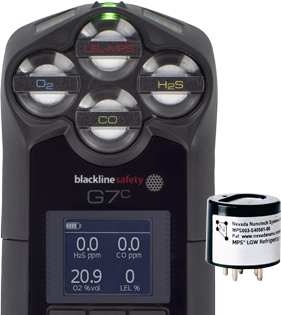 The year 2020 saw the first revolutionary advancement in multi-gas detector technology in decades: the molecular property spectrometer (MPS) sensor. Although the pellistorand NDIR sensors are still in wide use, this brand new technology takes gas detection in the workplace to an entirely different level. The next generation of combustible gas sensors through MPS technology is changing the gas detection industry due to:
The year 2020 saw the first revolutionary advancement in multi-gas detector technology in decades: the molecular property spectrometer (MPS) sensor. Although the pellistorand NDIR sensors are still in wide use, this brand new technology takes gas detection in the workplace to an entirely different level. The next generation of combustible gas sensors through MPS technology is changing the gas detection industry due to:
- Accurate detection of multiple flammable gases, reducing costly false alarms
- Being immune to poisoning (including sensor poisoning from exposure to silicons)
- No need for recalibration
- Automatic compensation for environmental conditions
MPS sensors can accomplish all this with many of the most common combustible gases, including hydrogen, methane, ethane, propane, butane, pentane, hexane, toluene, xylene, ethylene, propylene, and isopropanol.
This multi-combustible gas sensor can classify gases by molecular weight and density, with six possible classifications — hydrogen, hydrogen-containing mixtures, or natural gas, and light, medium or heavy gases/mixtures. When this data is used in combination with Blackline’s location enabled connected devices, your company can have high visibility into the types, locations, and frequency of flammable gases being encountered by employees at a worksite.
READ MORE:
MPS Sensor & Combustible Gas Information Sheet
Connect with Blackline Safety for Your Industrial Gas Detectors
We specialize in helping companies respond to toxic and combustible gas emergencies in real time, with worker safety at the forefront. Our vision is to transform the industrial workplace through connected safety technology to ensure every worker has the confidence to get the job done and return home safe.
Get In Touch
Let’s start a discussion about your safety challenges and needs.
Related Blog Posts
Beyond Compliance: The Power of Lifesaving Single-Gas Detection
March 01, 2024
In large and complex industrial settings like refineries, oil and gas facilities, and petrochemical plants, employee and contractor safety is the...
Blackline Safety’s G7c Wins Best Innovative Product of the Year
November 29, 2023
Rigorous evaluation by panel of health and safety experts at OSH India sees G7c come out on top {% video_player "embed_player" overrideable=False,...
New Lone Worker Safety Research Recommends Monitoring Technologies to Save Lives
October 20, 2023
NSC whitepaper identifies strategies for protecting lone workers with a case study that features Blackline Safety’s connected safety wearables As...



